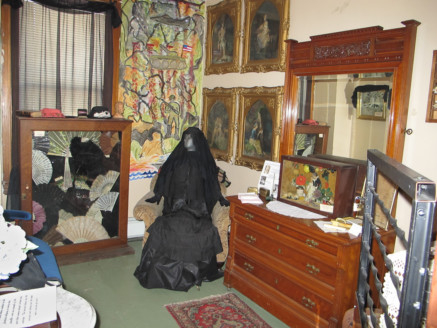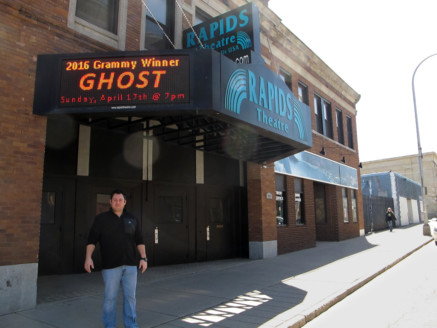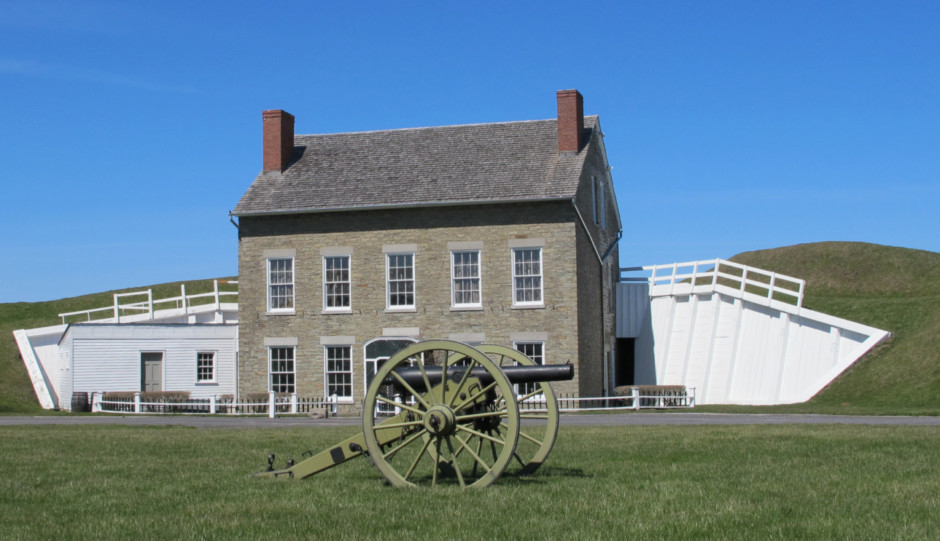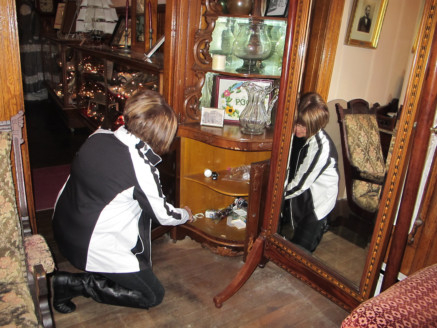
One of New York’s newest tourism ventures is more dare than invitation.
There’s the usual guide suggesting places to visit: Inns, museums, restaurants, a winery.
Not so usual are claims all may be inhabited by ghosts.
The Haunted History Trail of New York State has been unfurled for anyone who’s ever ambled through a “ghost walk,” knows what EVP stands for (electronic voice phenomena), watched Ghost Hunters, Ghost Busters or stayed up late around a Ouija board.
“We’re about to become one of your favourite haunts!” promises a region-by-region guide of nearly 70 spooky sites. The trail goes from the Rapids Theatre in Niagara Falls, where spirits are said to fool with musicians’ equipment, to Fort Ontario where the ghost of a drunken officer may roam, to the state capitol in Albany, where a nightwatchman who died in a 1911 fire reportedly still makes his rounds.
“The response that we’ve received has been crazy,” said Kelly Rapone, Genesee County’s tourism marketing director. It was Rapone’s idea to tap into the public’s ravenous appetite for the paranormal and give the state’s existing “haunted” sites the kind of speciality treatment used to package and promote its golf courses and wineries.
After testing the waters with sites in 12 counties in autumn of 2013, the trail now includes stops in about half of the state’s 62 counties. During the first four months of this year alone, website visitors requested well over 22,000 guidebooks. That’s nearly 10 times the number that went out in the trail’s inaugural year.
No one is promising a sighting or even endorsing the notion that ghosts exist, though most if not all of the sites have had multiple claims of paranormal activity.
“It’s all for fun,” said Rapone, who said most of the promotion has been done through Facebook and other social media.
“You’re either going to be interested in it or you’re not ... It’s very niche,” she said.
Yet it’s hardly a passing fad, according to Carson Mencken, sociology department chairman at Baylor University and an expert on paranormal believers.
“Since the dawn of time we’ve been interested in what comes next,” said Mencken, who said the economic impact of paranormal themes in entertainment and tourism is “almost too large to calculate.” He points to cities like New Orleans; Salem, Massachusetts; and Charlestown, South Carolina, where the paranormal is big business.
“It’s only human nature to try to find some empirical evidence that something exists beyond death,” Mencken said. “That’s why so many people are interested in ghosts and ghost stories and hunting ghosts.”
New York’s haunted trail opens the door for new visitors to sites already drawing tourists for other reasons.
“We probably get as many people ghost hunting as regular visitors, and it’s a different group,” said Kathryn Woodlock, a docent at the Museums of Historic Palmyra, whose main purpose is to showcase the Finger Lakes town’s connections to the Book of Mormon, Erie Canal, Underground Railroad and women’s suffrage movement.
Woodlock doesn’t bring up the stories of the strange noises, swaying chandelier and apparitions on regular tours unless someone asks, she said, mindful of the site’s educational and historic mission. But ghost walks and hunts have become featured attractions in their own right, with the built-in history lessons a kind of bonus.
There’s the same kind of “come for the ghosts, stay for the history” attitude at the Fort Ontario State Historic Site, where Superintendent Paul Lear said being featured in an episode of the Syfy channel’s Ghost Hunters made clear the impact of the ghost stories that have been told at the 1755 British-built fort since the 1800s.
“The show aired on a Monday or Tuesday and the following weekend it was pouring rain but all of the sudden, the fort is full of people,” Lear said. “It brings a whole new audience and it increases visitation, raises funds — and it increases the volunteer pool.”
Part of the “I Love NY” campaign, the Haunted History Trail project is funded by participating county tourism agencies, each of which kicks in about $1,500 (Dh5,509) a year, and a matching state grant.
Don’t miss it
Check out hauntedhistorytrail.com











_resources1_16a08528000_small.jpg)



